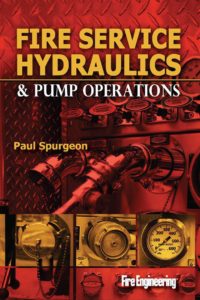Fire Service Hydraulics and Pump Operations
Fire Service Hydraulics and Pump Operations
Fire Service Hydraulics and Pump Operations is broken down into two sections. The first section deals with the theory and practice of pencil-sharp hydraulics. The purpose of this section is to give you, the reader, the basic understanding of water usage in the fi re service . These chapters break down the theories behind hydraulics and how the formulas are derived. A practical approach of getting water into the pump and then delivered to the fire ground is explained in functional terms. The second chapter breaks down the equation that every pump operator needs to calculate at every fire. This is the formula that is at the heart of every pump operation. Special situations such as relay pumping and drafting also covered.
You can also Read Bearing steel technology – developments in rolling bearing steels and testing
Fire Service Hydraulics and Pump Operations content
- Introduction
![Fire Service Hydraulics]()
- FESHE Objectives Correlation
- Why We Use Water
- The Equation
- Water Supply
- Drafting
- Relay Pumping
- Sprinkler and Standpipe Systems
- Types of Pumps
- The Pump Panel
- Foam
- Appendix
- Glossary
- Index
There are many reasons why water used in fire service operations. Water acts in predictable and repeatable ways that allow firefighters to use it to extinguish fires. The actions of pump operators will have the same results each time, as long as they act in the same way every time. Over the years, methods developed to move water from point A to point B in a repeatable and predictable way.
The math equations presented in the text are straightforward. It is basic addition, subtraction, multiplication, and order of operation. All decimals rounded to the nearest hundredths place. Fire service hydraulics requires many math calculations. If you feel that math is not your strong suit, then it may be helpful to review a math book before you study this text.
Download
Fire Service Hydraulics and Pump Operations
OR


Comments are closed.